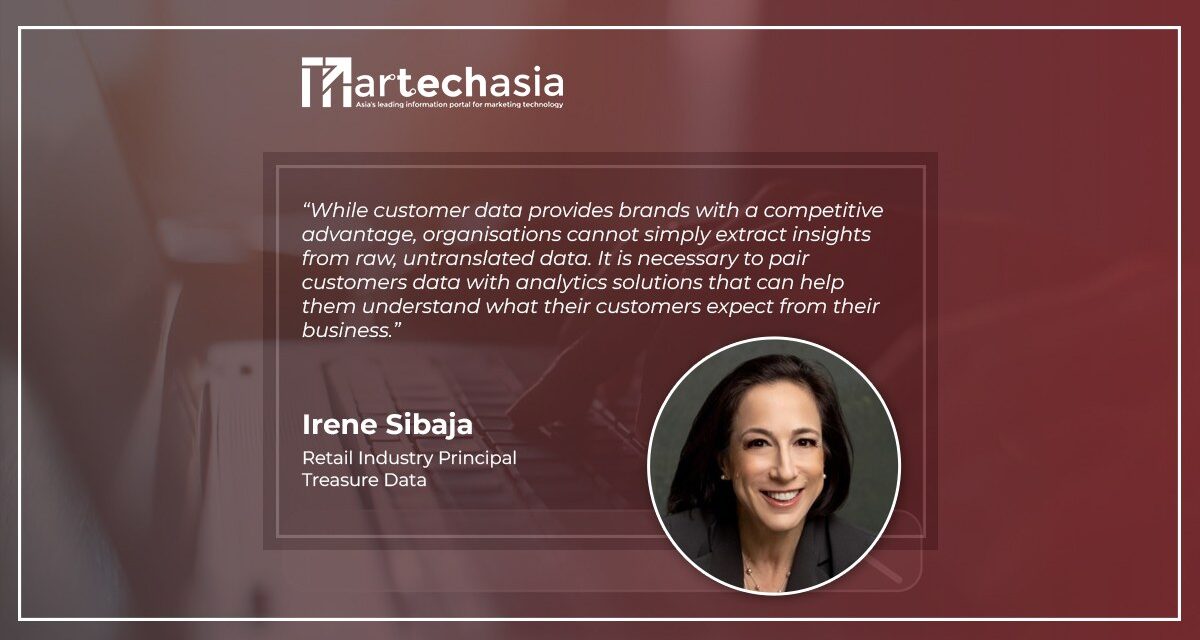By pairing customer loyalty programmes with customer data, retailers can optimise their CX initiatives to effectively meet customer demands.
Customer experience (CX) is a key feature for brands looking to reap the business benefits of customer loyalty. As the retail sector rapidly shifts from brick-and-mortar stores to online platforms, retailers are utilizing many loyalty-building measures to attract customers; ranging from discounts to rewards programs and curbside pickup options.
By pairing customer loyalty programs with customer data, retailers can optimise their CX initiatives to effectively meet customer demands. According to a report by EY Parthenon, 64 percent of younger Asia Pacific consumers were willing to share data for tailored online experiences. However, retailers are faced with the challenge of aligning their marketing and customer service teams to meet the growing sophistication of today’s average Asia Pacific consumer.

While retailers have been able to transform their communication channels into simpler and streamlined touchpoints, the real challenge lies in developing an overarching strategy that will enable them to connect with the customer’s needs and goals. This involves organizations using their customers’ profiles to create truly personalized journeys. By failing to relate with customers at each stage of their journey, retailers may find themselves struggling to compete with competitors who can put the needs of customers first.
Providing customers with connected experiences can be made possible by harnessing the power of data and analytics.
Establish Digital Connections
The development of digital channels has given customers new ways to engage with businesses, be it ordering items through online apps or inquiring about products via direct chat messaging. Since they do not require a physical presence to initiate communication between the two parties, digital channels will become the new norm in business-to-consumer (B2C) engagements. As a result, organizations need to embrace a digital-first CX strategy that enables contextualized experiences that can help fulfill customers’ present and future needs.
By ensuring a robust backend infrastructure that can store and transform customer data into actionable insights, organizations will be able to connect with and address customers’ issues such as cart abandonment, product defects and recommendations.

Connect Touchpoints
Most customers will turn away from brands that don’t remember previous interactions, subject them to repetitive ads or create meaningless conversations. This issue happens, even as organizations have the capabilities to create engaging marketing content. Maximizing customer loyalty requires brands to be aware of their progress in their personalized journeys across various communication touchpoints.
A customer data platform (CDP) provides organizations with a centralized platform that unifies customer data points across various sources. This way, marketing and customer support teams can operate with the same intelligence to create unique and engaging CX offerings. Moreover, it also engenders customer loyalty by giving them the impression that your brand always remembers their needs.
Personalise Engagements
Personalised messaging is the backbone of any successful marketing strategy. In fact, many companies have developed methods to deliver unique engagements to draw customers in. Depending on the nature of their business and their customers, some brands might adopt fun, humorous messaging while others may opt for a professional and informative tone. Without granular data, however, businesses face the possibility of their customers losing touch with the messaging as it might not be relevant for their needs and goals.
While customer data provides brands with a competitive advantage, organisations cannot simply extract insights from raw, untranslated data. It is necessary to pair customers data with analytics solutions that can help them understand what their customers expect from their business.
Data analytics does more than give businesses a comprehensive view on their customers. It also lets them resolve customers identities, build audience profiles, share and report data across relevant departments and predict trends. By harnessing these features, organizations will be able to confidently deliver authentic connected experiences that are relevant to customer needs. These factors are key to building strong customer loyalty in the long run.


















